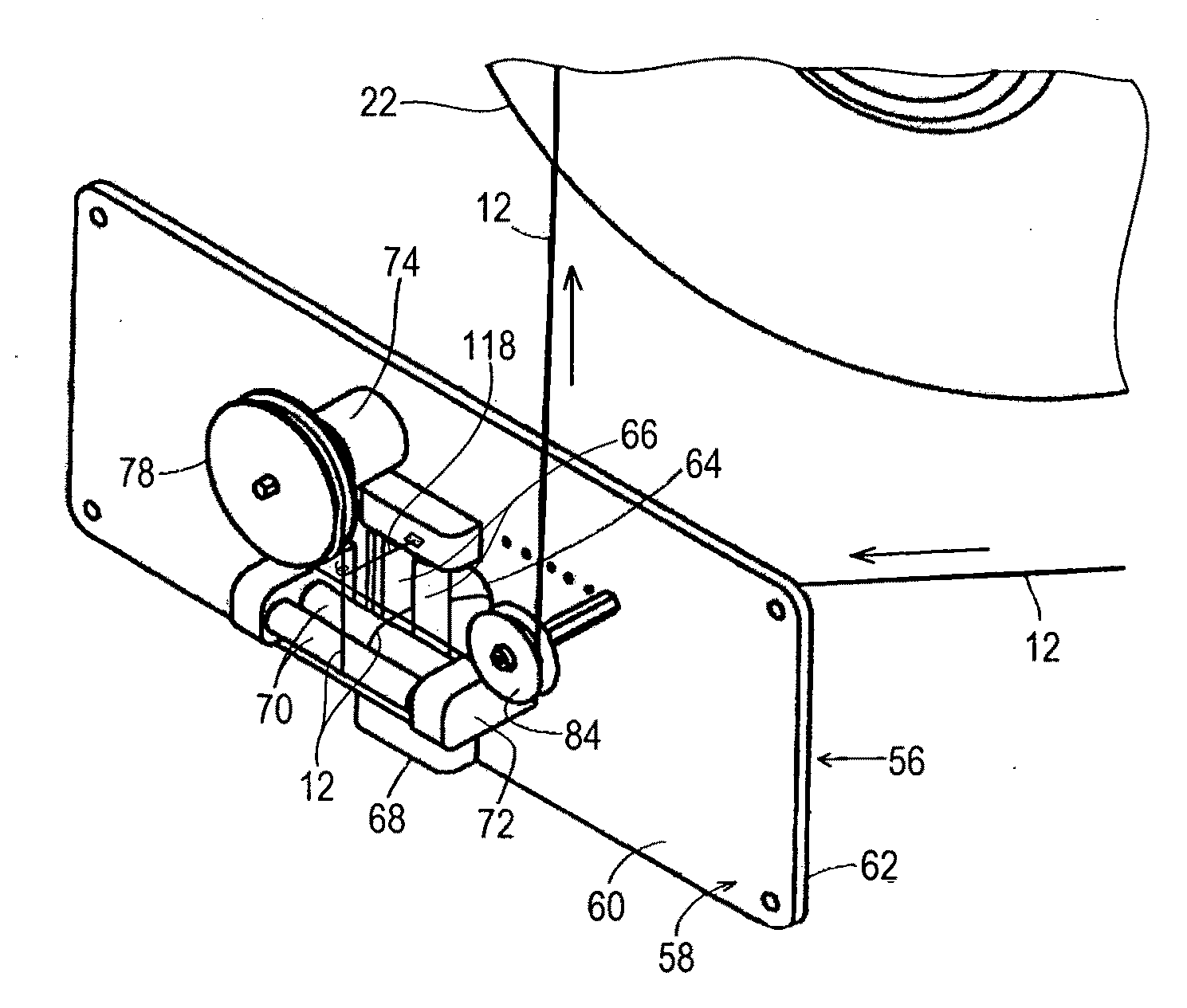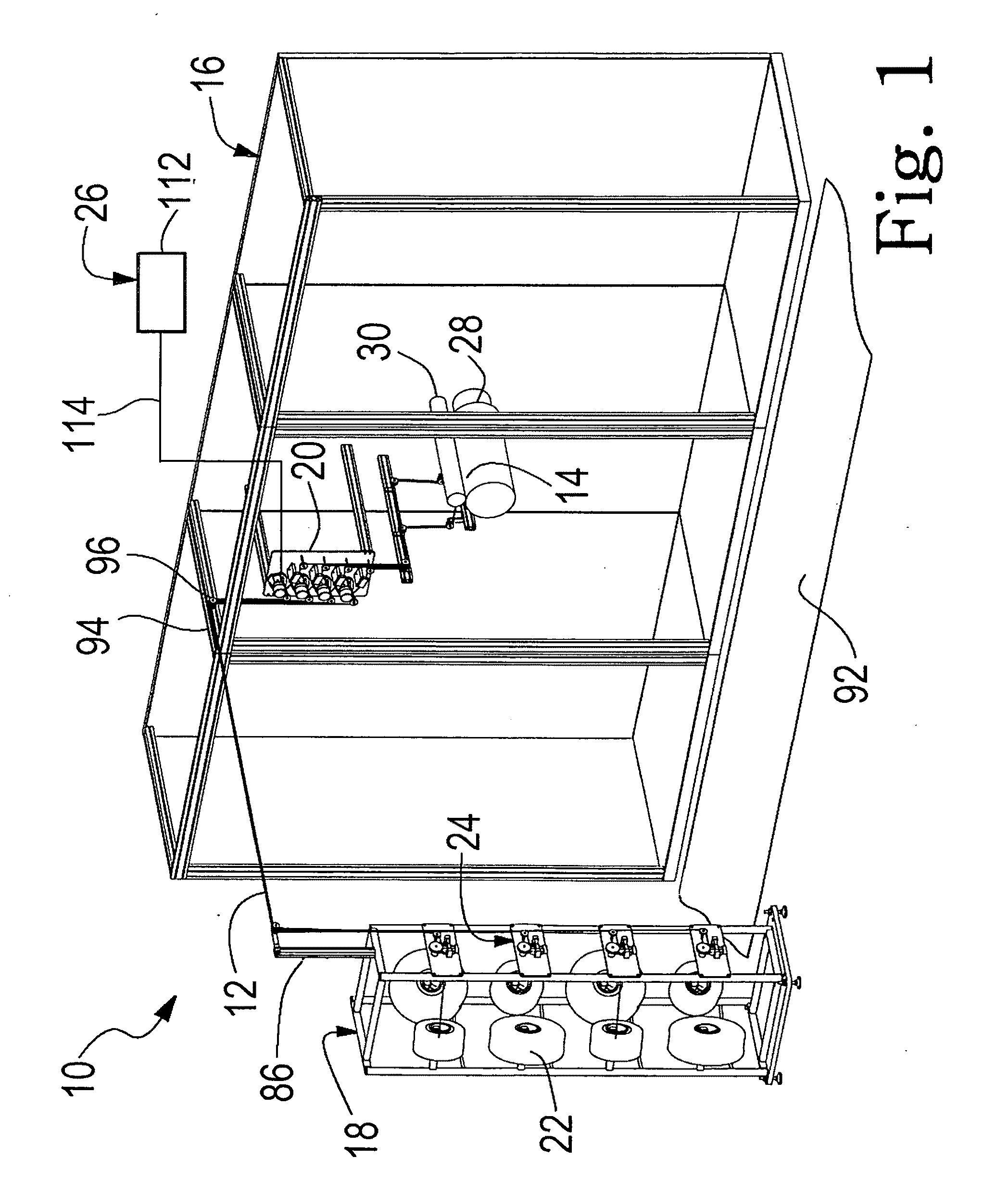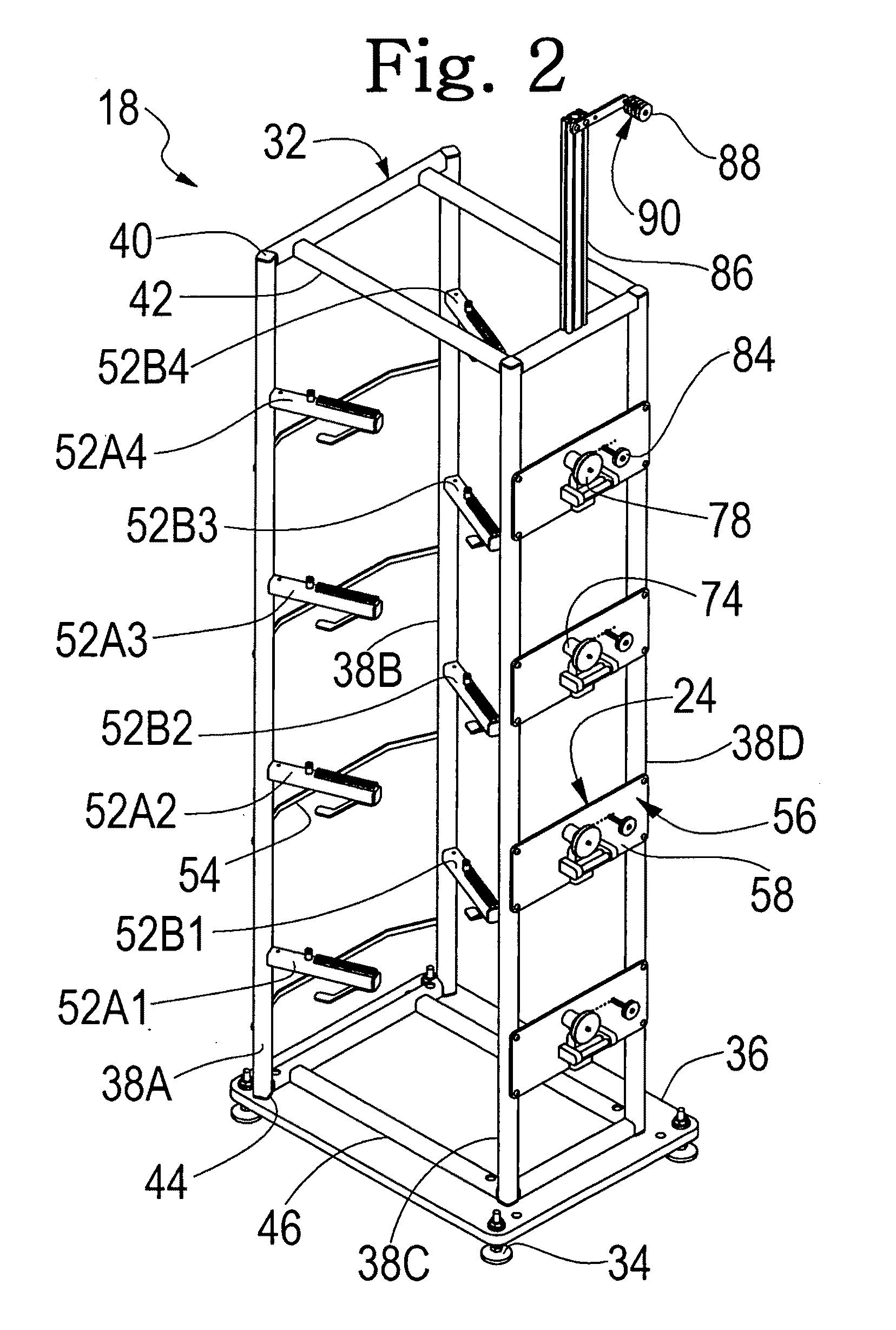Unwind and feed system for elastomeric thread
a technology of elastomeric thread and feed system, which is applied in the direction of shuttles, instruments, printers, etc., can solve the problems of substantial scrap production during shut-down and start-up, substantial down-time losses, and the manufacturing process must be shut down every time, so as to eliminate the remaining tension variation, reduce the effect of tension variation and smoothing out tension variation
- Summary
- Abstract
- Description
- Claims
- Application Information
AI Technical Summary
Benefits of technology
Problems solved by technology
Method used
Image
Examples
Embodiment Construction
[0108]FIG. 1 illustrates a typical layout of an unwind system 10 of the invention, feeding thread 12 into a nip 14, where the nip represents the location where the thread joins a product assembly operation 16. Unwind system 10 includes a creel 18 and a final tension control system 26. Creel 18 holds a plurality of spools 22 of thread to be unwound and fed into the product assembly operation. Creel 18 has a first-stage control system 24. The primary controlling elements of final tension control system 26 are mounted on a delivery platform 20. The product assembly operation 16 is generally represented by a first manufacturing process roll 28 and a second manufacturing process roll 30 which collectively define manufacturing nip 14 where threads treated according to the unwind system of the invention enter the product assembly operation.
[0109]Turning now to FIGS. 2 and 3, creel 18 has a metal e.g. steel frame 32 which is supported from the floor or other underlying surface by a pluralit...
PUM
 Login to View More
Login to View More Abstract
Description
Claims
Application Information
 Login to View More
Login to View More - R&D
- Intellectual Property
- Life Sciences
- Materials
- Tech Scout
- Unparalleled Data Quality
- Higher Quality Content
- 60% Fewer Hallucinations
Browse by: Latest US Patents, China's latest patents, Technical Efficacy Thesaurus, Application Domain, Technology Topic, Popular Technical Reports.
© 2025 PatSnap. All rights reserved.Legal|Privacy policy|Modern Slavery Act Transparency Statement|Sitemap|About US| Contact US: help@patsnap.com



